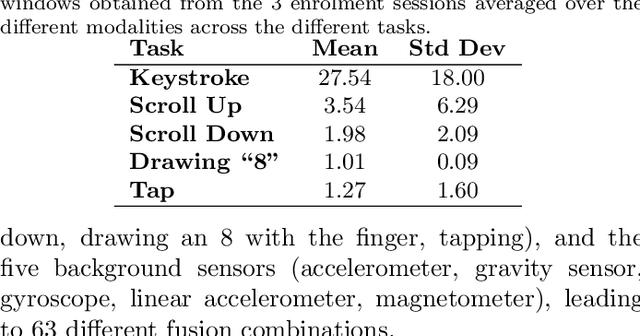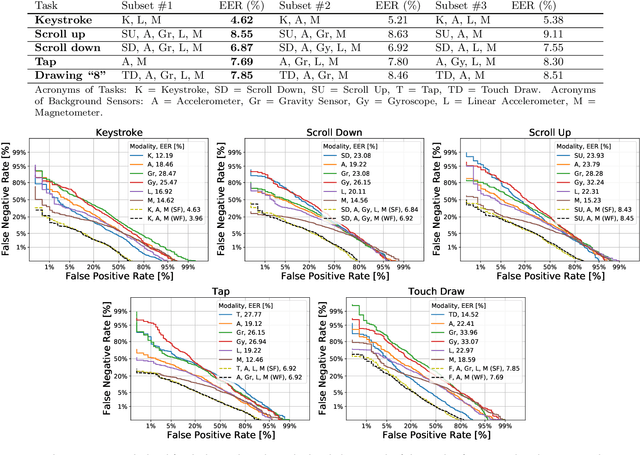Gael Le Lan
High Fidelity Text-Guided Music Generation and Editing via Single-Stage Flow Matching
Jul 04, 2024



Abstract:We introduce a simple and efficient text-controllable high-fidelity music generation and editing model. It operates on sequences of continuous latent representations from a low frame rate 48 kHz stereo variational auto encoder codec that eliminates the information loss drawback of discrete representations. Based on a diffusion transformer architecture trained on a flow-matching objective the model can generate and edit diverse high quality stereo samples of variable duration, with simple text descriptions. We also explore a new regularized latent inversion method for zero-shot test-time text-guided editing and demonstrate its superior performance over naive denoising diffusion implicit model (DDIM) inversion for variety of music editing prompts. Evaluations are conducted on both objective and subjective metrics and demonstrate that the proposed model is not only competitive to the evaluated baselines on a standard text-to-music benchmark - quality and efficiency-wise - but also outperforms previous state of the art for music editing when combined with our proposed latent inversion. Samples are available at https://melodyflow.github.io.
Masked Audio Generation using a Single Non-Autoregressive Transformer
Jan 09, 2024Abstract:We introduce MAGNeT, a masked generative sequence modeling method that operates directly over several streams of audio tokens. Unlike prior work, MAGNeT is comprised of a single-stage, non-autoregressive transformer. During training, we predict spans of masked tokens obtained from a masking scheduler, while during inference we gradually construct the output sequence using several decoding steps. To further enhance the quality of the generated audio, we introduce a novel rescoring method in which, we leverage an external pre-trained model to rescore and rank predictions from MAGNeT, which will be then used for later decoding steps. Lastly, we explore a hybrid version of MAGNeT, in which we fuse between autoregressive and non-autoregressive models to generate the first few seconds in an autoregressive manner while the rest of the sequence is being decoded in parallel. We demonstrate the efficiency of MAGNeT for the task of text-to-music and text-to-audio generation and conduct an extensive empirical evaluation, considering both objective metrics and human studies. The proposed approach is comparable to the evaluated baselines, while being significantly faster (x7 faster than the autoregressive baseline). Through ablation studies and analysis, we shed light on the importance of each of the components comprising MAGNeT, together with pointing to the trade-offs between autoregressive and non-autoregressive modeling, considering latency, throughput, and generation quality. Samples are available on our demo page https://pages.cs.huji.ac.il/adiyoss-lab/MAGNeT.
In-Context Prompt Editing For Conditional Audio Generation
Nov 01, 2023Abstract:Distributional shift is a central challenge in the deployment of machine learning models as they can be ill-equipped for real-world data. This is particularly evident in text-to-audio generation where the encoded representations are easily undermined by unseen prompts, which leads to the degradation of generated audio -- the limited set of the text-audio pairs remains inadequate for conditional audio generation in the wild as user prompts are under-specified. In particular, we observe a consistent audio quality degradation in generated audio samples with user prompts, as opposed to training set prompts. To this end, we present a retrieval-based in-context prompt editing framework that leverages the training captions as demonstrative exemplars to revisit the user prompts. We show that the framework enhanced the audio quality across the set of collected user prompts, which were edited with reference to the training captions as exemplars.
Exploring Speech Enhancement for Low-resource Speech Synthesis
Sep 19, 2023



Abstract:High-quality and intelligible speech is essential to text-to-speech (TTS) model training, however, obtaining high-quality data for low-resource languages is challenging and expensive. Applying speech enhancement on Automatic Speech Recognition (ASR) corpus mitigates the issue by augmenting the training data, while how the nonlinear speech distortion brought by speech enhancement models affects TTS training still needs to be investigated. In this paper, we train a TF-GridNet speech enhancement model and apply it to low-resource datasets that were collected for the ASR task, then train a discrete unit based TTS model on the enhanced speech. We use Arabic datasets as an example and show that the proposed pipeline significantly improves the low-resource TTS system compared with other baseline methods in terms of ASR WER metric. We also run empirical analysis on the correlation between speech enhancement and TTS performances.
FoleyGen: Visually-Guided Audio Generation
Sep 19, 2023Abstract:Recent advancements in audio generation have been spurred by the evolution of large-scale deep learning models and expansive datasets. However, the task of video-to-audio (V2A) generation continues to be a challenge, principally because of the intricate relationship between the high-dimensional visual and auditory data, and the challenges associated with temporal synchronization. In this study, we introduce FoleyGen, an open-domain V2A generation system built on a language modeling paradigm. FoleyGen leverages an off-the-shelf neural audio codec for bidirectional conversion between waveforms and discrete tokens. The generation of audio tokens is facilitated by a single Transformer model, which is conditioned on visual features extracted from a visual encoder. A prevalent problem in V2A generation is the misalignment of generated audio with the visible actions in the video. To address this, we explore three novel visual attention mechanisms. We further undertake an exhaustive evaluation of multiple visual encoders, each pretrained on either single-modal or multi-modal tasks. The experimental results on VGGSound dataset show that our proposed FoleyGen outperforms previous systems across all objective metrics and human evaluations.
Stack-and-Delay: a new codebook pattern for music generation
Sep 15, 2023Abstract:In language modeling based music generation, a generated waveform is represented by a sequence of hierarchical token stacks that can be decoded either in an auto-regressive manner or in parallel, depending on the codebook patterns. In particular, flattening the codebooks represents the highest quality decoding strategy, while being notoriously slow. To this end, we propose a novel stack-and-delay style of decoding strategy to improve upon the flat pattern decoding where generation speed is four times faster as opposed to vanilla flat decoding. This brings the inference time close to that of the delay decoding strategy, and allows for faster inference on GPU for small batch sizes. For the same inference efficiency budget as the delay pattern, we show that the proposed approach performs better in objective evaluations, almost closing the gap with the flat pattern in terms of quality. The results are corroborated by subjective evaluations which show that samples generated by the new model are slightly more often preferred to samples generated by the competing model given the same text prompts.
Enhance audio generation controllability through representation similarity regularization
Sep 15, 2023Abstract:This paper presents an innovative approach to enhance control over audio generation by emphasizing the alignment between audio and text representations during model training. In the context of language model-based audio generation, the model leverages input from both textual and audio token representations to predict subsequent audio tokens. However, the current configuration lacks explicit regularization to ensure the alignment between the chosen text representation and the language model's predictions. Our proposal involves the incorporation of audio and text representation regularization, particularly during the classifier-free guidance (CFG) phase, where the text condition is excluded from cross attention during language model training. The aim of this proposed representation regularization is to minimize discrepancies in audio and text similarity compared to other samples within the same training batch. Experimental results on both music and audio generation tasks demonstrate that our proposed methods lead to improvements in objective metrics for both audio and music generation, as well as an enhancement in the human perception for audio generation.
Mobile Behavioral Biometrics for Passive Authentication
Mar 14, 2022



Abstract:Current mobile user authentication systems based on PIN codes, fingerprint, and face recognition have several shortcomings. Such limitations have been addressed in the literature by exploring the feasibility of passive authentication on mobile devices through behavioral biometrics. In this line of research, this work carries out a comparative analysis of unimodal and multimodal behavioral biometric traits acquired while the subjects perform different activities on the phone such as typing, scrolling, drawing a number, and tapping on the screen, considering the touchscreen and the simultaneous background sensor data (accelerometer, gravity sensor, gyroscope, linear accelerometer, and magnetometer). Our experiments are performed over HuMIdb, one of the largest and most comprehensive freely available mobile user interaction databases to date. A separate Recurrent Neural Network (RNN) with triplet loss is implemented for each single modality. Then, the weighted fusion of the different modalities is carried out at score level. In our experiments, the most discriminative background sensor is the magnetometer, whereas among touch tasks the best results are achieved with keystroke in a fixed-text scenario. In all cases, the fusion of modalities is very beneficial, leading to Equal Error Rates (EER) ranging from 4% to 9% depending on the modality combination in a 3-second interval.
 Add to Chrome
Add to Chrome Add to Firefox
Add to Firefox Add to Edge
Add to Edge